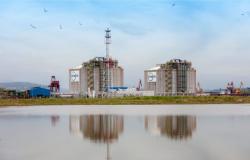This summer’s night sky will be adorned by an exceptional astronomical phenomenon, when a recurring nova, known as T Coronae Borealis (T CrB) or “Blaze Star”, becomes visible on Earth without the need for telescopes. This event is planned for September 2024.
T CrB it’s a binary system located in the constellation of Corona Borealis, about 3,000 light years from our planet. The system is composed of a white dwarf, an Earth-sized remnant of a dead star with a mass comparable to that of our Sun, and an ancient red giant that is slowly being stripped of hydrogen by the relentless gravitational pull of its hungry star. neighbor. Its cycle of thermonuclear explosions occurs approximately every 80 years.. The last time this phenomenon was observed from Earth was in 1946, and current patterns suggest that we are on the verge of seeing a new eruption.
Dr. Rebekah Hounsell, a research scientist at NASA’s Goddard Space Flight Center, highlights the importance of this event, not only for the scientific community but also for inspiring new generations of astronomers. According to Hounsell, The possibility of directly observing a cosmic event of such magnitude has the potential to motivate young people and adults to get involved in space science.
The process behind the nova involves the accumulation of hydrogen from the red giant on the surface of the white dwarf, which eventually triggers a thermonuclear explosion. Unlike a supernova, which marks the catastrophic end of a star, a nova like T CrB It does not destroy the white dwarf, but rather expels the accumulated material in a dazzling flash, allowing the cycle to repeat itself..
How to observe this phenomenon?
To locate Corona Borealis in the night sky, amateur astronomers must Look for the horseshoe-shaped curve of stars west of the Hercules constellation, after sunset during the summer months. The position of T CrB it’s found between the two brightest stars in the northern hemisphere, Arcturus and Vega.
The observation of T CrB will be no exception, with ground-based telescopes and space missions like the James Webb Space Telescope and Neil Gehrels’ Swift Observatory set to capture data across the visible and non-visible light spectrum.
This event not only offers a visual spectacle, but also a unique opportunity to advance our understanding of recurring stellar explosions and the stellar processes that fuel them. With tools like NASA’s X-ray Polarimetry Explorer (IXPE) and Fermi Gamma-ray Space Telescope, researchers hope to gain unprecedented insight into the life cycles of binary systems and the powerful stellar processes that still exist. they drive.






